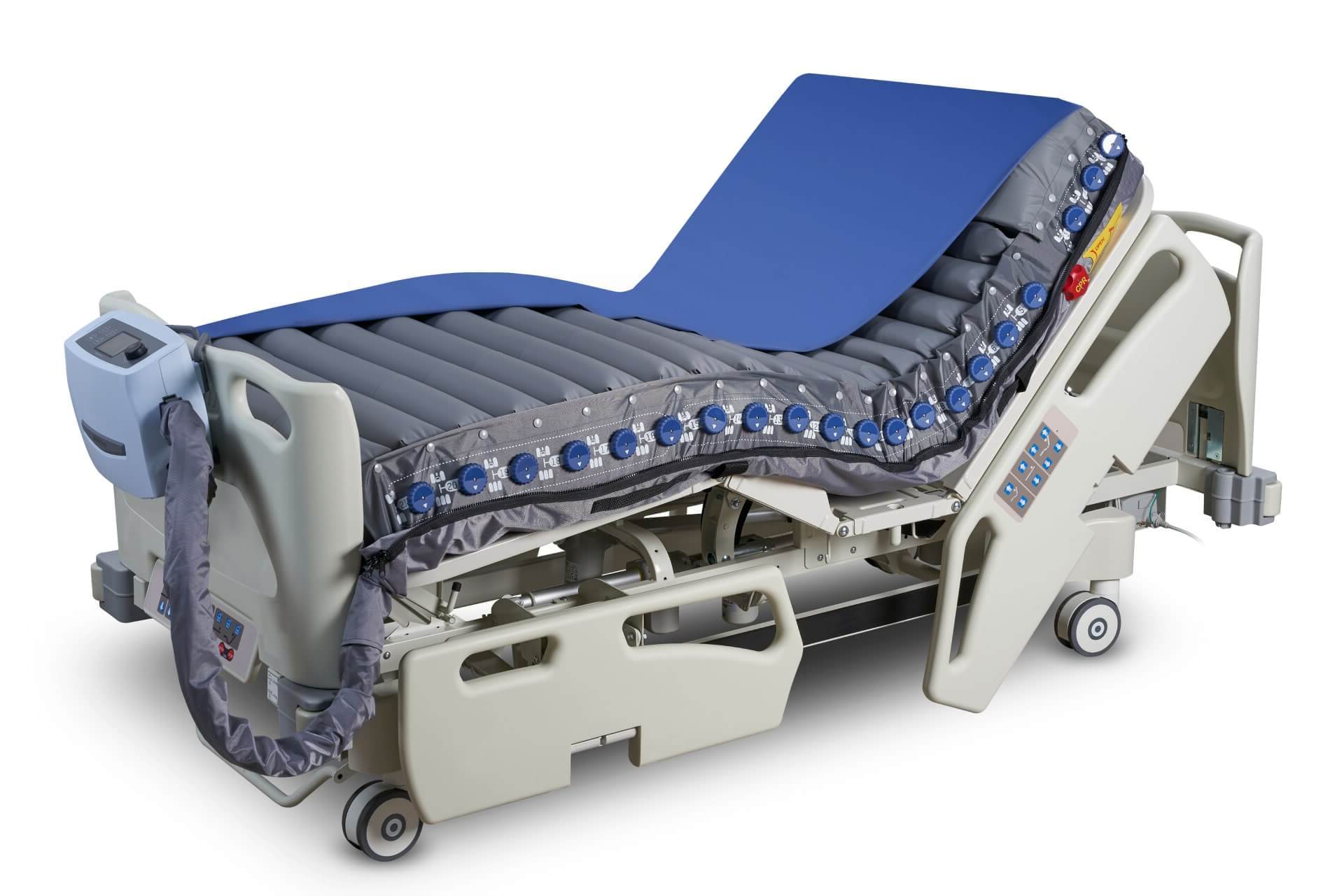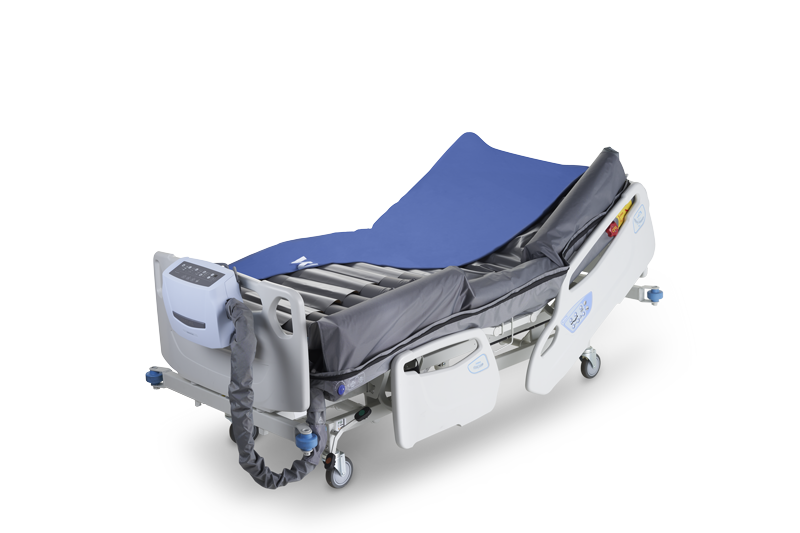Pressure Injury Prevention

Pressure injuries (PI) impact over 7 million patients per year globally. US healthcare alone reports more than 2.5 million PI cases, over 60 000 deaths, and at least USD 9-11 billion in cost per year.1 Prevention protocols for PI require frequent patient handling and, consequently, contributes significantly to workflow complexity and high incidences of musculoskeletal injuries in healthcare providers, with lower back pain as the dominant on-the-job injury.2 US long-term care centers spend over 6 million USD (56% of all medical costs) every year compensating nurses for occupation-induced back injuries.3
A disproportion between healthcare providers and patient care increases PI and higher incidences of in-hospital post-acute readmission and associated mortality rate.4 Air mattresses that automate labor-intensive procedures and complex therapy workflows, a wide range of pressure settings, and individual air cells that deflate to accommodate unique physical needs, actively prevent PI in post-acute and acute care patients, improving patient outcome and experience, workplace health, and healthcare resource allocation.

Ulcers are a prevalent, costly, and global healthcare issue.
Signs of pressure injuries can start to develop during surgeries. When left untreated, injuries become ulcers, and in extreme cases, they can cause death.6 Pressure redistribution surfaces that aid in turning and repositioning patients improve early interventions.7

Pressure-distributing beds improves cost-effectiveness.
Treatment cost for managing pressure injuries starts at USD 250,000 per inpatient and adds USD 2122 per hospital day.1 Alternating pressure (active) support surfaces improve comfort and reduce pressure ulcers, boosting long-term cost-effectiveness and patient care.8
Reference
- Padula WV, Pronovost PJ, Makic MBF, Wald HL, Moran D, Mishra MK, Meltzer DO. Value of hospital resources for effective pressure injury prevention: a cost-effectiveness analysis. BMJ Qual Saf. 2019 Feb;28(2):132-141. doi: 10.1136/bmjqs-2017-007505. Epub 2018 Aug 10. PMID: 30097490; PMCID: PMC6365919.
- Hignett S. Intervention strategies to reduce musculoskeletal injuries associated with handling patients: a systematic review. Occup Environ Med. 2003 Sep;60(9):E6. doi: 10.1136/oem.60.9.e6. PMID: 12937202; PMCID: PMC1740617.
- Dawson AP, McLennan SN, Schiller SD, Jull GA, Hodges PW, Stewart S. Interventions to prevent back pain and back injury in nurses: a systematic review. Occup Environ Med. 2007 Oct;64(10):642-50. doi: 10.1136/oem.2006.030643. Epub 2007 May 23. PMID: 17522134; PMCID: PMC2078392.
- Burke RE, Whitfield EA, Hittle D, Min SJ, Levy C, Prochazka AV, Coleman EA, Schwartz R, Ginde AA. Hospital Readmission From Post-Acute Care Facilities: Risk Factors, Timing, and Outcomes. J Am Med Dir Assoc. 2016 Mar 1;17(3):249-55. doi: 10.1016/j.jamda.2015.11.005. Epub 2015 Dec 20. PMID: 26715357; PMCID: PMC4847128.
- Vangilder C, Macfarlane GD, Meyer S. Results of nine international pressure ulcer prevalence surveys: 1989 to 2005. Ostomy Wound Manage. 2008 Feb;54(2):40-54. PMID: 18382042.
- Shafipour V, Ramezanpour E, Gorji MA, Moosazadeh M. Prevalence of postoperative pressure ulcer: A systematic review and meta-analysis. Electron Physician. 2016 Nov 25;8(11):3170-3176. doi: 10.19082/3170. PMID: 28070249; PMCID: PMC5217808.
- Black JM, Edsberg LE, Baharestani MM, Langemo D, Goldberg M, McNichol L, Cuddigan J; National Pressure Ulcer Advisory Panel. Pressure ulcers: avoidable or unavoidable? Results of the National Pressure Ulcer Advisory Panel Consensus Conference. Ostomy Wound Manage. 2011 Feb;57(2):24-37. PMID: 21350270.
- Shi C, Dumville JC, Cullum N, Rhodes S, Jammali-Blasi A, McInnes E. Alternating pressure (active) air surfaces for preventing pressure ulcers. Cochrane Database Syst Rev. 2021 May 10;5(5):CD013620. doi: 10.1002/14651858.CD013620.pub2. PMID: 33969911; PMCID: PMC8108044.



